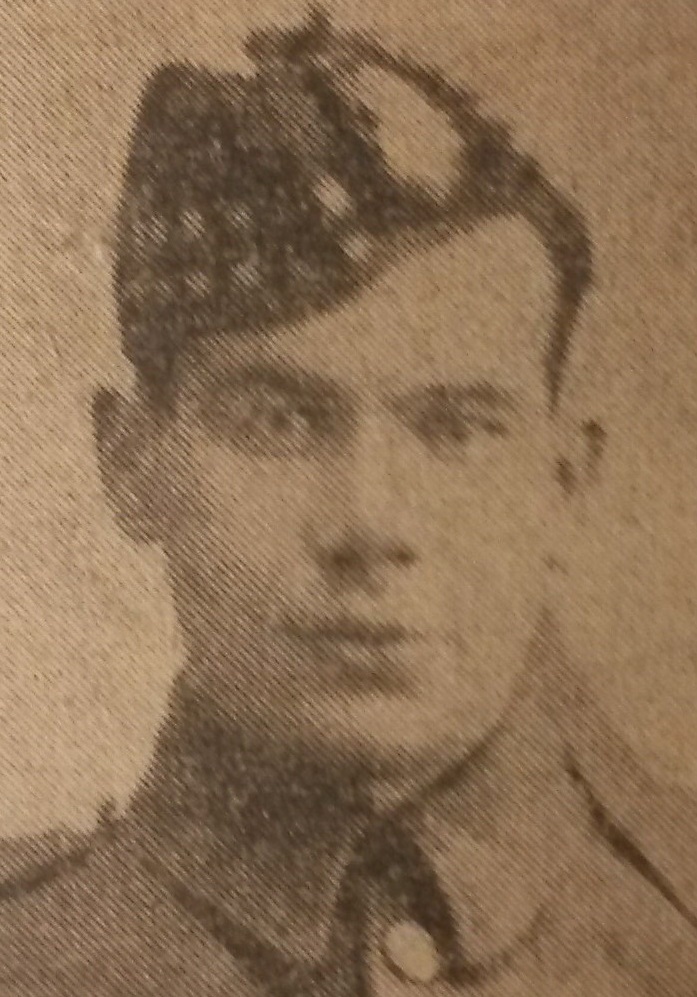
John Ormerod

Private 18043
16th (Service) Bn (2nd Glasgow), Highland Light Infantry
John was killed in action on 18 November 1916 during the Battle of the Somme. The battalion of which he was a member was known as the Glasgow Boy's Brigade Battalion. It was formed in Glasgow on 2 September 1914 by the Lord Provost and City, and many of the original recruits came from the Glasgow Boy's Brigade.
On Saturday 18 November 1916 the 16th Battalion Highland Light Infantry was engaged in the Battle of the Ancre (the tenth and final phase of the Battle of the Somme). They were part of 97th Brigade, 32nd Division at this time.
Chris McCarthy records in The Somme - The Day-by-Day Account, that the Division was given the job of attacking the Munich and Frankfort Trenches between Leave Avenue and Lager Alley. At 0610 hours the 16th and 17th Battalions Highland Light Infantry advanced through sleet.
The 17th Battalion on the right were stopped by machine-gun fire, along with the right of the 16th Battalion.
The rest of the Division carried on and entered both trenches, but were cut off and suffered heavy casualties. Few men made it back to the British trenches.
The 16th Battalion's War Diary records:
"17-19th November 1916
The Battalion under the Command of Lieut R Kyle marched to MAILLY-MAILLET and halted for a meal, and then proceeded to Brigade Headquarters at WHITE CITY. Guides were procured at this point, and the Battalion proceeded to assembly positions at WAGON ROAD N.E. of BEAUMONT-HAMEL at 9.45pm.
The Guides lost their way and connection was broken between Companies, result being that when the assembly position was ultimately reached about 2 am., only "D" Company was intact. The other Coys latterly reached this point, but it was 6am before the whole Battalion was in Battle Positions, which was as follows:-
Right to Left "A" "B" "C" "D" Companies with 17th H.L.I., on our right and 11th Border Regiment on our left.
Zero time 6.10 am
Objectives (1) MUNICH TRENCH
(2) FRANKFURT TRENCH
At Zero the Battalion moved forward and "D" Company and part of "C" Company succeeded in entering MUNICH TRENCH with little opposition. A Strong point with from 6 to 8 Machine Guns in the the centre of "A" Coy's front held up the other Coys and while part of the Battalion on our left also entered MUNICH TRENCH, the Battalion on our right was held up by Machine Gun fire. Three platoons of "D" Company pushed forward and took FRANKFURT TRENCH, the remainder of the men having been left to mop up MUNICH TRENCH.
Owing to the attack on our flanks having been unsuccessful, the enemy soon collected in large numbers, and lively bombing duels took place in MUNICH TRENCH. Our small party was quickly overwhelmed, and latterly every man a casualty.
There was no support for the party which entered FRANKFURT TRENCH, but they hung on to the part they had captured, although isolated through the enemy still being in possession of his front line.
The remnant of the Battalion took up position in WAGON ROAD in readiness for any Counter attack which might be launched.
The Battalion was relieved by the 2nd Battalion Inniskilling Fusiliers on the morning of 19th November 1916.
Relief completed by 8.30am.
The Battle Casualties were:-
Killed
Captain W.E. Robinson, 2nd Lieut G.M. Simpson, 2nd Lieut D.A. Milholm, 2nd Lieut G.W. Campbell. 16 Other Ranks.
Wounded
Captain A. McPherson, 2nd Lieut H.A. Agnew, 2nd Lieut C.D. Mitchell. 104 Other Ranks.
Missing
Lieut A. Skene, 2nd Lieut J. Stewart, 2nd Lieut F. Scott. 260 Other Ranks.
Wounded and Missing
2nd Lieut J.M. Bannatyne, 2nd Lieut M.M. Lyons, 2nd Lieut W. Duff. 10 Other Ranks."
John has no known grave and his name is commemorated on the Thiepval Memorial (Pier and Face 15C).
The Soldiers Died in the Great War Database records that John enlisted in the Army in Blackburn.
Further information about John is available at the Cotton Town website.
| The inscription and panel commemorating John on the Thiepval Memorial to the Missing | |
| A map showing the area of Frankfurt and Munich trenches northeast of Beaumont-Hamel (from British Trench Map 10-57DSE1&2-2E-141016-Beaumont and surroundings) |